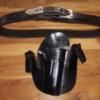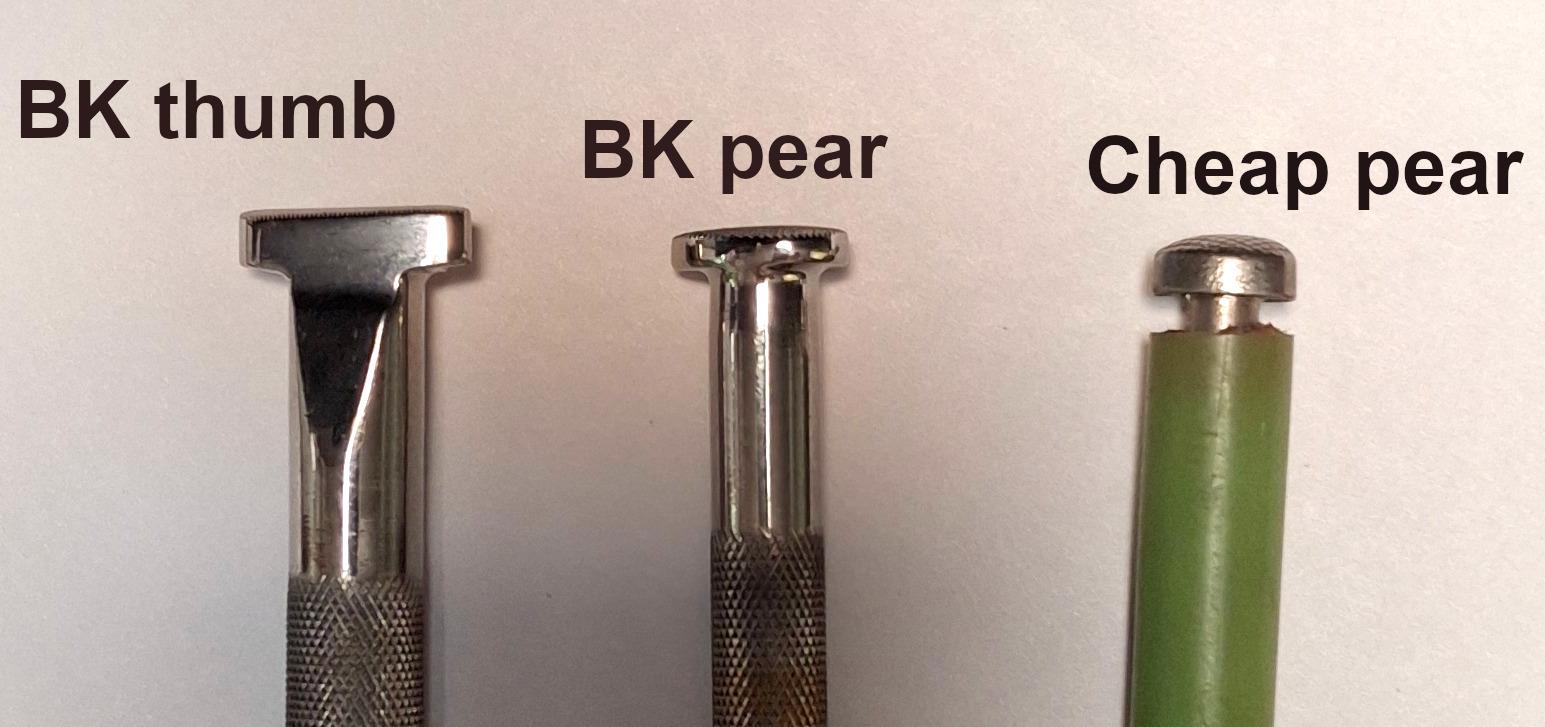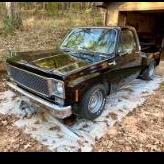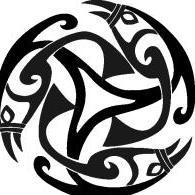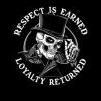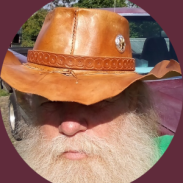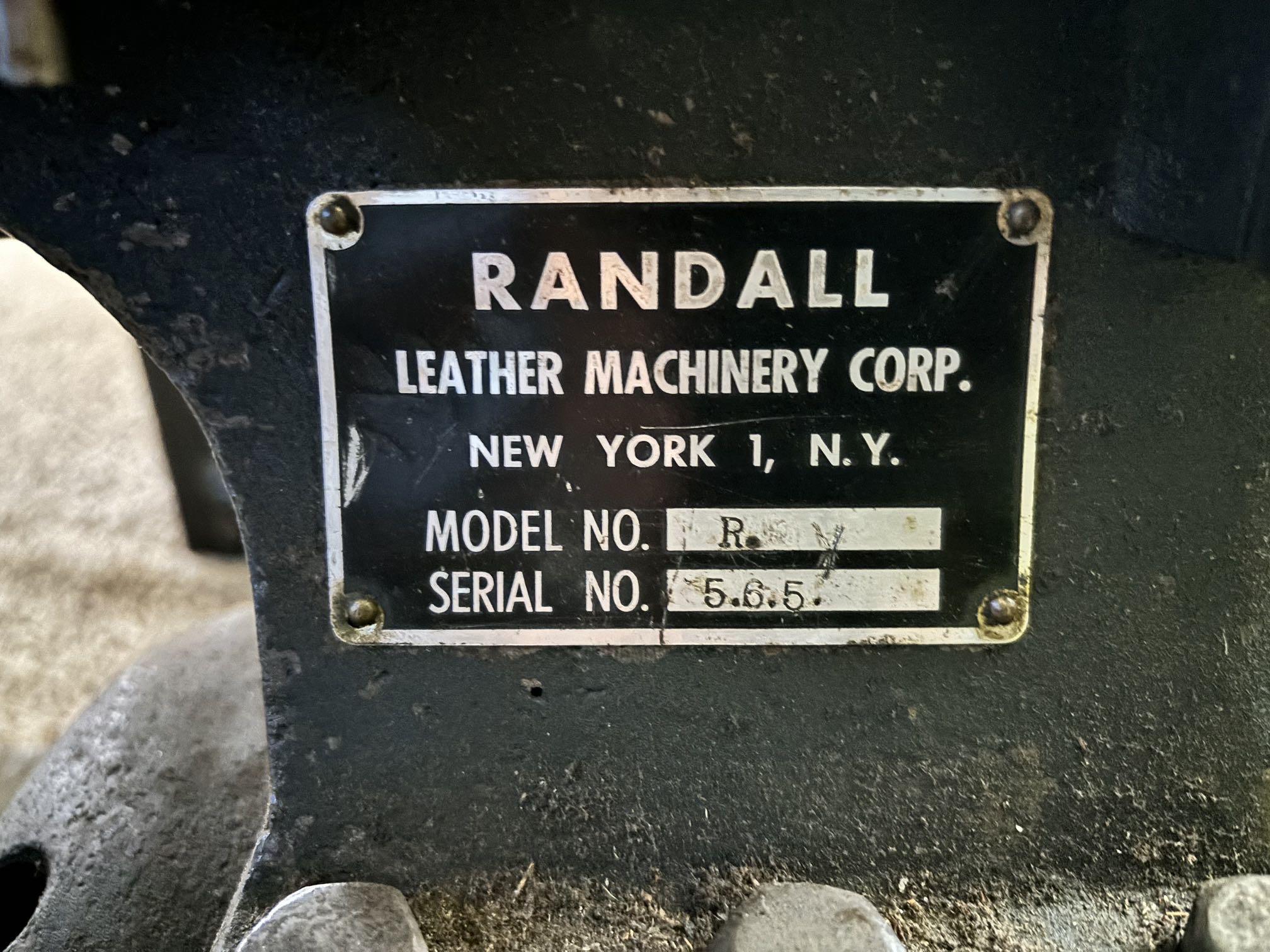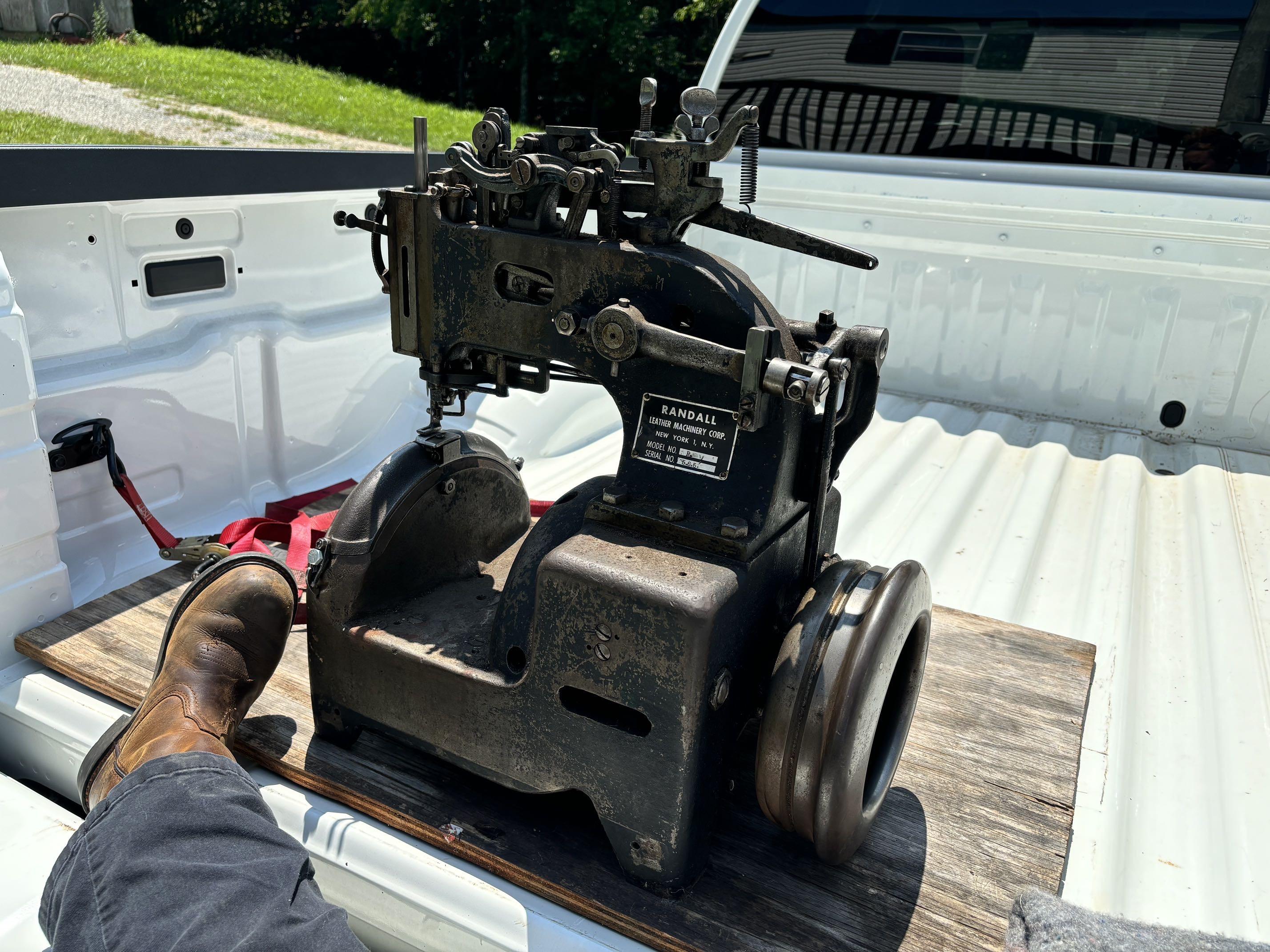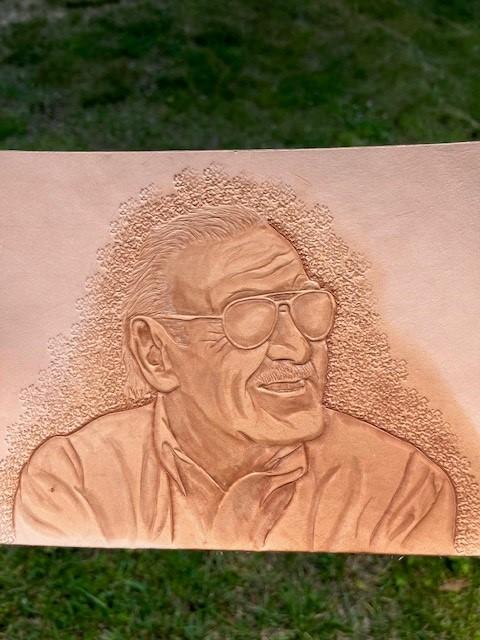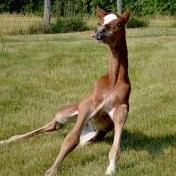All Activity
- Past hour
-
Thanks badhatter . . . probably is . . . just worn down May God bless, Dwight
-
LakeOtter started following more rounded, premium/stainless pear shaders? Not so flat -ish?
-
I started with a super el-cheapo pear shader that I've actually gone back to using, for now. It is quite rounded over or convex-topped and easy to use, for me, for making nice, contoured dish shapes. When I received my B.K. Pear shaders, I was surprised to find they seemed scarcely more rounded over than a thumprint (which I expect to not be very rounded over on top). I love Barry King products and have nothing to criticize, here... in fact, I also noticed another premium brand or so pears that were fairly flat-topped like this, as well, when browsing pictures online. Must be an expert thing. (see pic attached) As a returning novice (with experience, tho) I find it difficult to make as gentle of a convex impression. They want to dig in like a thumbprint, requiring loads more expertise in walking it around and tapping gently around the outside on the shaded area, to compensate, esp. when checkered (if even possible). This flatter-or-more-rounded seems to be a preference thing. Jim Linnell showed an early Ray Hackbarth (long gone except vintage used) pear shader that was more rounded over like my cheap one. The only thing I don't like about my cheap one is its cheaply molded “checkered” pattern that matches nothing else I have. Does anyone know where I can get a more rounded pear shader in choices of horizontal lines and fairly fine checkers? I believe Hackbarths to be few and far between. Thanks! Jeff in FL
-
@mbnaegle Wow! Thank you so much for that information! I love these machines and the history behind them. They truly are a work of art. I got some email replies from Campbell Randall today. I was given a manual for selecting my parts. I’m really glad to see that they are still being serviced and receiving new parts. Thanks again for all the historical information. I really enjoyed that. @bruce johnson Thank you!
-
Appreciate you chiming in to confirm. 😀 The edge of this shoulder is sharp, so it makes that we want the thread nestled inside the shoulder groove instead of dragging across its sharp edge. Originally (when I took the photos for the beginning of this thread), the feed dog movement was nicely centered in the opening front to back. Shifting it to the rear (away from the user) seems to make it so the thread almost always rides inside the shoulder groove. It's still very clunky though stitching in reverse at 4mm or longer stitch lengths. I'll do my best.. (Hats off to the videographers of the world that make it look easy!) Hopefully this will help to debug. I do love the sound and feel of a machine when it sews smoothly, and it seems I'll never get back to stitching until I unravel this mystery. hook-1-overall-export__small.mp4
- Today
-
Okay, that certainly helps narrow down what you need! You don't have watch straps on there, for example, which use much smaller irons and thread. So, it looks like maybe 4 to 5 mm would match the leather thicknesses required for those items, for strength and visual proportions. It's unclear if you're going for a set of pricking irons (which merely mark the holes with a slit, which are completed by a stitching awl), or a set of Japanese style diamond chisels (which go through both layers, making a narrow diamond hole that usually doesn't require an awl). You also need to make sure to match your needles and thread to the hole size and spacing. Here's a quick chart that I cribbed from somewhere else, which helps me match them up: John James Needles Threads Size Size Length (mm) diameter (mm) Tiger/Ritza (mm) Lin Cable 4 004 48 0.4 0.6 532/632/832 2 002 54 1 0.8 432/332 0 1/0 57 1.1 1 00 2/0 57 1.3 1.2 000 3/0 62 1.6 Most of what I do falls in the middle range -- for my 3mm diamond irons, I use the 1/0 needles, with either .8 or 1 mm thread. For thicker projects, the 5 mm irons are what I pull out, with correspondingly larger needles and thread.
- Yesterday
-
.thumb.jpg.6e903dd66163ad5672f00f144058c571.jpg)
spring flowers and good food
Northmount replied to chuck123wapati's topic in All About Us and Off Topic
That will be 220 Volt (VAC). Current (amperage) may be around 40A to 80A. You can check your breaker panel to see what the breaker was rated at if it is still there. Just for comparison: Dryers are typically on a 30A circuit (220 VAC). Electric ranges are typically 40A. For the past 50 years or so, most houses had a 100A service. Many now are 200A. -
Scoutmom103 started following Randall leather sewing machine needs a shuttle
-
Thanks for the kind words and questions. This has been traded and I no longer have this card. I'll try and remember what I did haha. This is all carved, no lasers or anything. The eye socket texture was done with a modeling spoon as was most of the skull. I used a triangular beveler around the pom and trim and faded that out. I used a fine stylus to make the fur textures in the pot and trim as well as fabric for the hat. I cant recall what background texture I used but you can use whatever suits you. As for color, it's a trick i saw on youtube by kirill latypov. The whole piece is dyed black then painted with a thin layer of black acrylic paint. And the color is added by using a dry brush technique with acrylic paint. The cast iron is a result of gray over the black. Oh, and the pitted skull texture is done by laying coarse sand paper over the areas to texture and rubbing it in with a modeling spoon.
-
@PastorBob The ones similar to the Richards can be had off Temu for about $4 USD. The Richards which according to this article ( https://www.apparelnbags.com/blog/where-are-richardson-hats-made/ ) are made in China, Bangladesh, and Vietnam anyway. kgg
-
AlZilla started following Tippman Boss stitcher, stamping and other leather tools for sale.
-
@NGC Moved this to the Marketplace. Please see the rules listed here: https://leatherworker.net/forum/forum/71-items-for-sale/ and add the required info for the Boss (Pic, Price, Shipping Info, Location). The odds and ends will need to be listed in the appropriate catagory. Thanks
- 1 reply
-
- tippman boss
- leather stitcher
-
(and 2 more)
Tagged with:
-
FrankHester started following Tippman Boss stitcher, stamping and other leather tools for sale.
-
NGC joined the community
-
I have a barely used Tippman Boss stitcher, numerous leather stamps and other tools for sale. Although I have never been a prolific leather crafter, I have a wide array of tools. Consider this a closeout sale. Everything must go!
- 1 reply
-
- tippman boss
- leather stitcher
-
(and 2 more)
Tagged with:
-
Welcome to the forum from SW Missouri. It seems that the folks doing patches on hats prefer the Richardson brand of trucker hat. Model 112. Looks like they can be had for $6 and up.
-
Wow! Amazing work. I always liked his cameo appearances in the recent movies.
-
Latigo Trading joined the community
-

Randall leather sewing machine needs a shuttle
mbnaegle replied to Vicki Vallencourt's topic in Leather Sewing Machines
Yep, they're still fully supported. I try to keep things neutral on here as I don't want anyone to think I'm just one here trying to sell machinery or promote our company, but shoot an email over to service@campbell-randall.com and we can get you a PDF of the manual, and a quote for the shuttle and bobbins. We don't have complete records for the Randall Lockstitch machines, but can tell you that they were made new between around 1910 and the 1940's or 1950's. I've only ever seen serial numbers up to the early #2000's, so I'd estimate your machine was from the 1920's or maybe the 1930's, and the black 'new-york' tag means it was factory rebuilt sometime between the 1960's and the early 1980's. Campbell first developed their machine in 1882, but only wanted to lease machines. for 120 years the routine was that you would lease a machine from them, then send it back when you were done after 10-20 years, they would re-manufacture it, and ship it back out to a new client. Randall was established as a harness machinery maker and Campbell approached them to make Campbell parts and machines for Campbell to sell. Randall said "SURE! Just get us copies of all the prints," which Campbell did, and within a year or so Randall had ripped them off and made their own version of the Campbell with just enough changes to get around the patents. Campbell couldn't have been too happy about it, but it was good for the market because Randall only sold machines. So now people had options in that you could lease a Campbell, or own a Randall (also note that Landis also touted the "own your own" idea with their machinery). Both companies did very well in the coming decades with lots of diversification, until the late 50's and early 60's when the big corporations they had become part of were restructuring, and Campbell Bosworth Machinery split off from United Shoe Machinery, and the Randall Company was split up with the original leather machinery side being sold to a family in New York. who also bought Campbell Bosworth. So the competitors ended up under the same roof, but still marketed as different companies, until the mid 80's when they had a family spat and split into two different companies again. Then in 2006, we put them back together here in Texas, but were fully merged into one company. The lease program ended in 2000 and we've only been selling machines since. When we run out of the old lease machines to remanufacture, we'll have to start casting the frames again. Campbell is the primary machine we build, being the "original," but we still fully support the Randall's. In the manual, there's a page of the Randall parts that do not interchange with the Campbell. We still sell both versions of these parts and we would just need to know that your machine is a Randall and not a Campbell. Otherwise Campbell is the default. They're great machines. Keep your RPM's under 300 (most users are much happier running around 100rpm or less) and keep it well oiled. There's not a ton of adjustments on them, but the manual gives a good understanding of it. These machines also don't like Nylon. Polyester or natural fiber threads are best as you want something that lays flat and doesn't retain a coil or stretch. They're designed for sewing leather, while most other stitchers are designed to sew all textiles. You can't sew fabrics, webbing, or other woven textiles, but they'll make beautiful durable stitches in leather and can work with many synthetics too. -

Randall leather sewing machine needs a shuttle
bruce johnson replied to Vicki Vallencourt's topic in Leather Sewing Machines
Campbell-randall.com @mbnaegle -
Vicki Vallencourt started following Randall leather sewing machine needs a shuttle
-
The heaviest rawhide comes from slaughter bulls. Percentage-wise, packer bulls are a very small number versus the total number of cattle slaughtered everyday, and not done by a lot of major packing plants. The hides are big and heavy from English breed bulls and especially northern cattle. Commercially, you may run across sourcing those in a smaller plant. Denise and Rod Nikkell used to build saddle trees. They drove to a small processor when they got a call there would be bulls. They picked up the wet hides and fleshed and dehaired themselves. I'm not going to say impossible to find processed bull rawhide but harder than straight run rawhide.
-
Vicki Vallencourt changed their profile photo
-
Leather2 started following Consew 206RB-1 for sale
-
Vicki Vallencourt joined the community
-
I agree about the background but the actual portrait is excellent. I remember sitting in front of the TV on Sat mornings with a bowl of cereal singing along to the Spiderman theme song lol
-
great job !!! i agree with you on the background.
-
ZellberryOutfits joined the community
-
I've been spending my leather time learning to do portrait work. The Elktracks studio courses by Annie Libertini have been invaluable in that effort. My first from scratch portrait is Stan "The Man" Lee. I love comic book heroes and his voice overs from the old cartoons always carry fond memories. As an adult it was great watching the Marvel universe come to life on the big screen, especially the X-men and Spiderman. Appreciate any criticisms or notes for improvement. I already know I probably wouldn't do the background the same. It seems to busy to me and distracts the boundary between figure and background, especially around the hair.
-
Monica Belle joined the community
-
That is why a lot of us have more then one machine as some machines are a lot better then others at certain things. There is no one size that fits all situations and sometimes you need two machines to do one item. The closest all rounder for most are the Juki LS-1341 (or clone) with a table top attachment. Is it possible for your items to skive the edges down to reduce the thickness of the leather????? Let us known what you decide on. kgg
-
Thank you so much, kgg, your reply was exactly the kind of breakdown I needed. You’re absolutely right about constantly running a machine near its max capacity; I hadn’t really thought about how that could affect long-term performance and wear. That 3/32" wiggle room suddenly feels a lot smaller when I imagine sewing through a welted seam or adding a midsole. I also appreciate the clarification about the Cobra Class 4. I had wrongly lumped it in with post beds, but now that you explained the weight and needle size, it definitely seems like overkill and not ideal for tight spaces like mine. The suggestion of the Juki LS1341 or its clones sounds like a solid middle ground. I’ll start digging into that direction and maybe even reach out to Toledo Industrial like you mentioned. Sending in sample material is a great idea I wouldn’t have thought of. And I really like your advice about having two machines to cover different ranges. That might end up being the smarter long-term investment rather than trying to find a one-size-fits-all setup. Thanks again for taking the time to lay all that out. Seriously helpful!
-
It's been a few years since I priced pricking irons. These particular irons are well made and should last a lifetime for marking, not punching, holes. An overstitch wheel will do the job as well.
-
Holster Question
badhatter1005 replied to Dwight's topic in Gun Holsters, Rifle Slings and Knife Sheathes
Are you 100%positive it isnt Jay Pee. Jay Pee is a reputable duty gear manufacturer. They supply everything from duty gear for police to honor guard accessories. Check out this link. https://www.jaypeeusa.org/ -
No I can't, technically, but in the 20 odd years that I have been doing leather, I have never been visited by the cops to check if I have bullet casings in my workshop nor have i had cops looking for bullet casings in my car. HS


